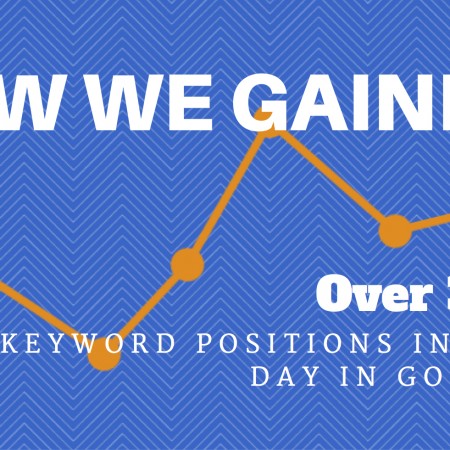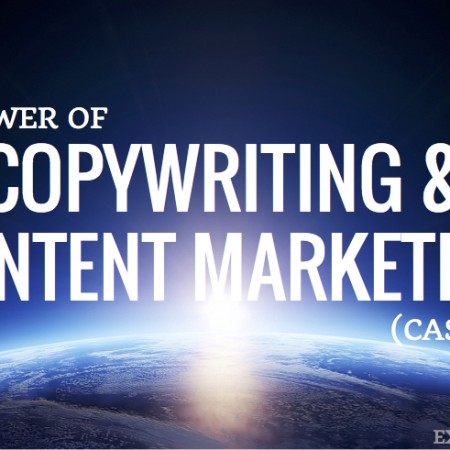Blogging ROI Case Study: How 18,000 Keywords In Google Bring Us Six-Figure Income Months
“I’m ‘doing’ content, but it’s just not bringing me clients.” “I’m posting and creating regularly – in fact, consistency is my middle name – but I’m still a one-person show with little funding to achieve my next level.” Lately, I’ve heard this ALL too often – but the reality is, if you develop content strategically, you CAN achieve six-figure income months in your business. Since it’s been almost two years since I created a case study on my brand (specifically, how we are our own content guinea pig: we’re able to make monthly six-figure sales happen from clients that found our content online), I decided it was time for a new one. I started the research for this in February, and today – five months later! – the case study is all done and live, as of today. Our last case study focused on how we achieve rankings – “How We Outrank Every Competitor & Win Through Organic Content Without Spending a Penny on Ads (Express Writers’ Content Case Study),” and was from October 2016. Today’s case study focuses on how we actually earn real income (to the tune of six-figures per month) from the content and rankings we’ve achieved. 99.9% of our leads and business revenue comes through the content we produce. And the majority of that content? Well, it’s published on our blog. Next, we interviewed a client we work with from time to time: Magnificent Marketing, a full-service marketing agency. We’ll share how they’ve boosted their client traffic numbers and rankings with great content. If you read one blog of mine this quarter, read this one. Grab a cup of coffee or tea, and dig in! [bctt tweet=”99.9% of our leads and revenue comes through the content we produce. And the majority of that content? Well, it’s published on our blog. Learn how we do it in our case study on #blogging #SEO success ” username=”ExpWriters”] Why & How SEO Blogging Equals ROI for Any Brand Blogging (a form of great content marketing) equals ROI, for any brand. In itself, blogging is a key online content format capable of building a brand, attracting your ideal clients to your website, and growing your entire business. Especially blogging written around viable SEO keywords you want to rank for. But here’s the caveat to that. That statement is only true if your blogging strategy includes consistency, relevancy and quality. [bctt tweet=”‘Blogging is a key online content format capable of building a brand… BUT… that statement is only true if your blogging strategy includes consistency, relevancy and quality.’ – @JuliaEMcCoy” on #bloggingROI username=”ExpWriters”] Businesses who create content strategically achieve ROI in the form of: Better, more qualified leads that convert at a higher rate than traffic from paid ads or paid search How many leads? Our content marketing ROI formula can help you estimate your average monthly leads/sales from content marketing Here’s the formula: Monthly Visitors x 16% Organic Traffic to Lead Conversion Rate = X Leads/Month) According to that formula, an average of 1,000 visitors/month can get you at least 160 high-quality leads/month from strategic blogging That’s not all, though. Blogging also brings in: Year-over-year site traffic growth that’s 8x higher than those at the back of the pack 6x the conversions of those who don’t publish content, according to a well-known study from Aberdeen and Kapost Incredibly convincing numbers, right? But, even better than stats, we have a prime, real-life example of what blogging ROI looks like. Ready? Let’s dig in and see exactly what the power of blogging–and great content–can do for a business. Express Writers’ Blogging ROI: $1,600 in Content = $66,700 Worth of Traffic & Organic Google Positions Here’s a real-life, extreme example of how great, consistent content creation can work incredibly well. Take a look at the current traction below for Express Writers. This is after six years of consistent content, with over 1,000 blogs published to-date on our site across those six consistent years. (Remember, steady content creation has a dominoes effect: It does better over time.) According to our data on SEMrush (pulled June 1, 2018), current paid search efforts to achieve our current month’s site traffic — 22,800 visitors — would cost $66,700. (This amount increases on a monthly basis for us. Lately, every month it’s been a 1-2k increase in traffic, with a fluctuating increase in rankings as well.) If we were to buy this much traffic through Google Adsense, that would be an average paid search cost of $2.92 per visitor. And, we haven’t even figured out how many of those are leads (buyers) yet. Expensive! $$$ How Much Content Do We Produce to Achieve Blogging ROI? + the Costs We publish, on average, one long-form, comprehensive piece of content weekly, and we update content on a monthly basis, too. Besides that, we publish monthly podcasts with show notes, and monthly #ContentWritingChat recaps. Here’s an example of one of our long-form blogs: And here’s an example of a #ContentWritingChat recap post: What does it cost to create this type of content regularly? Our costs run: Money: $400/month (this used to be $750, but we shaved off $300+ in costs by switching our Twitter chat to once/month instead of weekly) Time: 4-5 hours of my time/month in blogging prep, publishing, writing, outlining, optimizing, & 3-4 hours/month in email marketing If you qualify the hours I personally spend on our content into a “staff cost,” that alone could run $1,600+ per month. How Do the Costs Compare to Paid Methods? If paid search would cost $66,700 to achieve our current traffic in a month (22,800 visitors), and my cost of content marketing to achieve that traffic is $1,625, then paid search would be (at a minimum) 40x more expensive than my organic content marketing efforts. Or, put it another way – a solid, consistent content marketing strategy over time could be 40 times cheaper than a paid marketing strategy. For business owners and higher-ups who think exclusively in dollar signs, that’s … Read more





